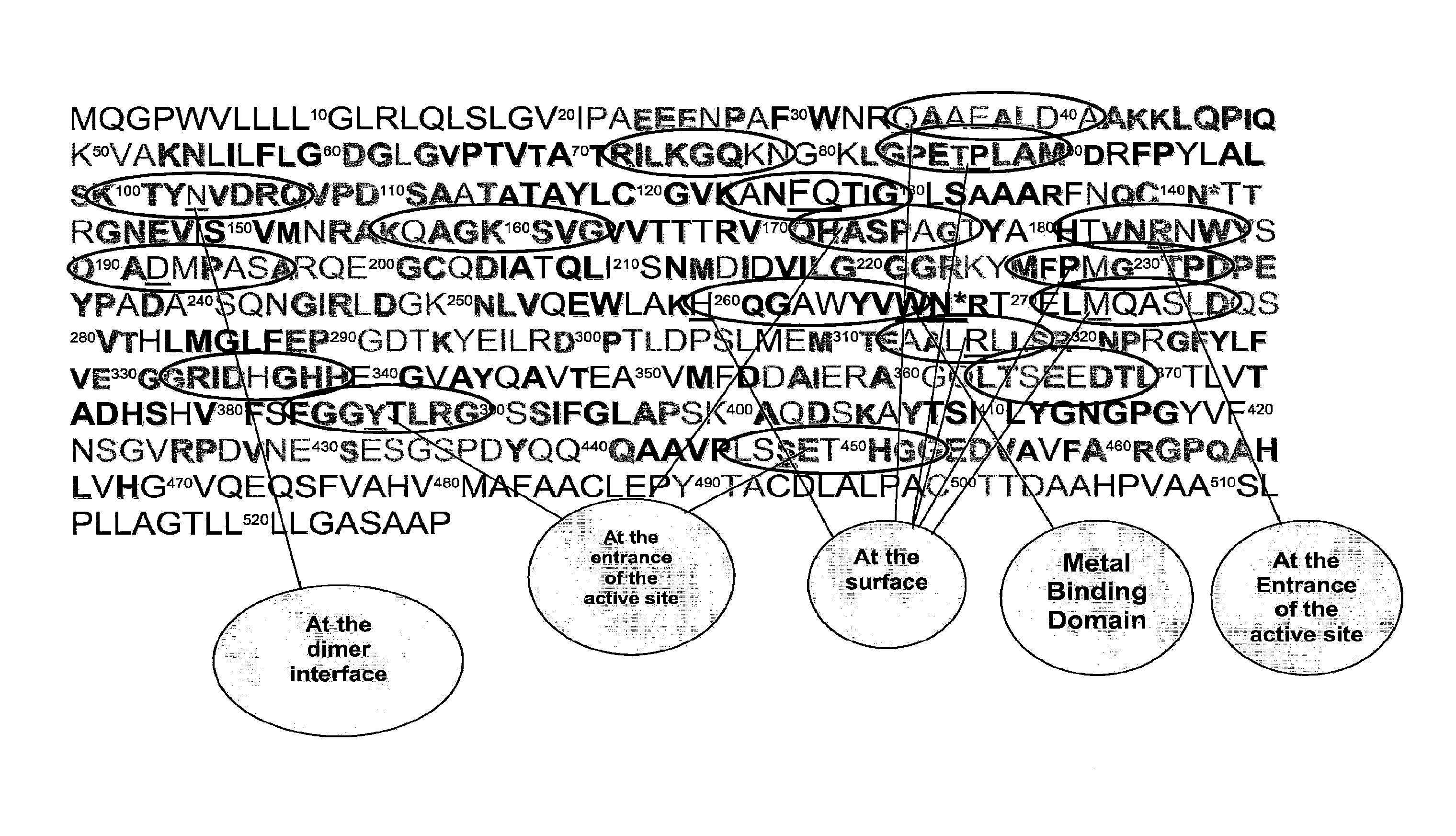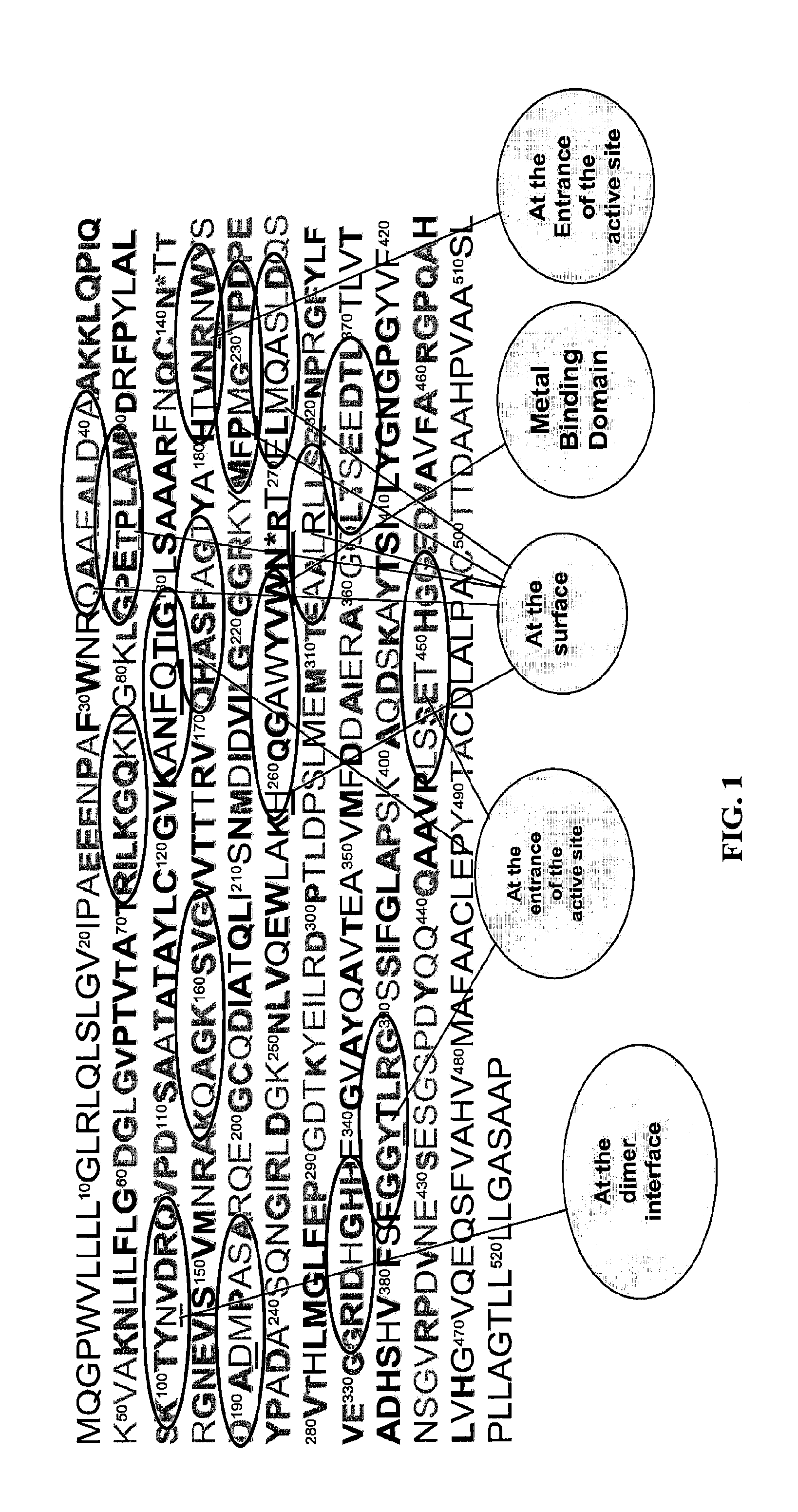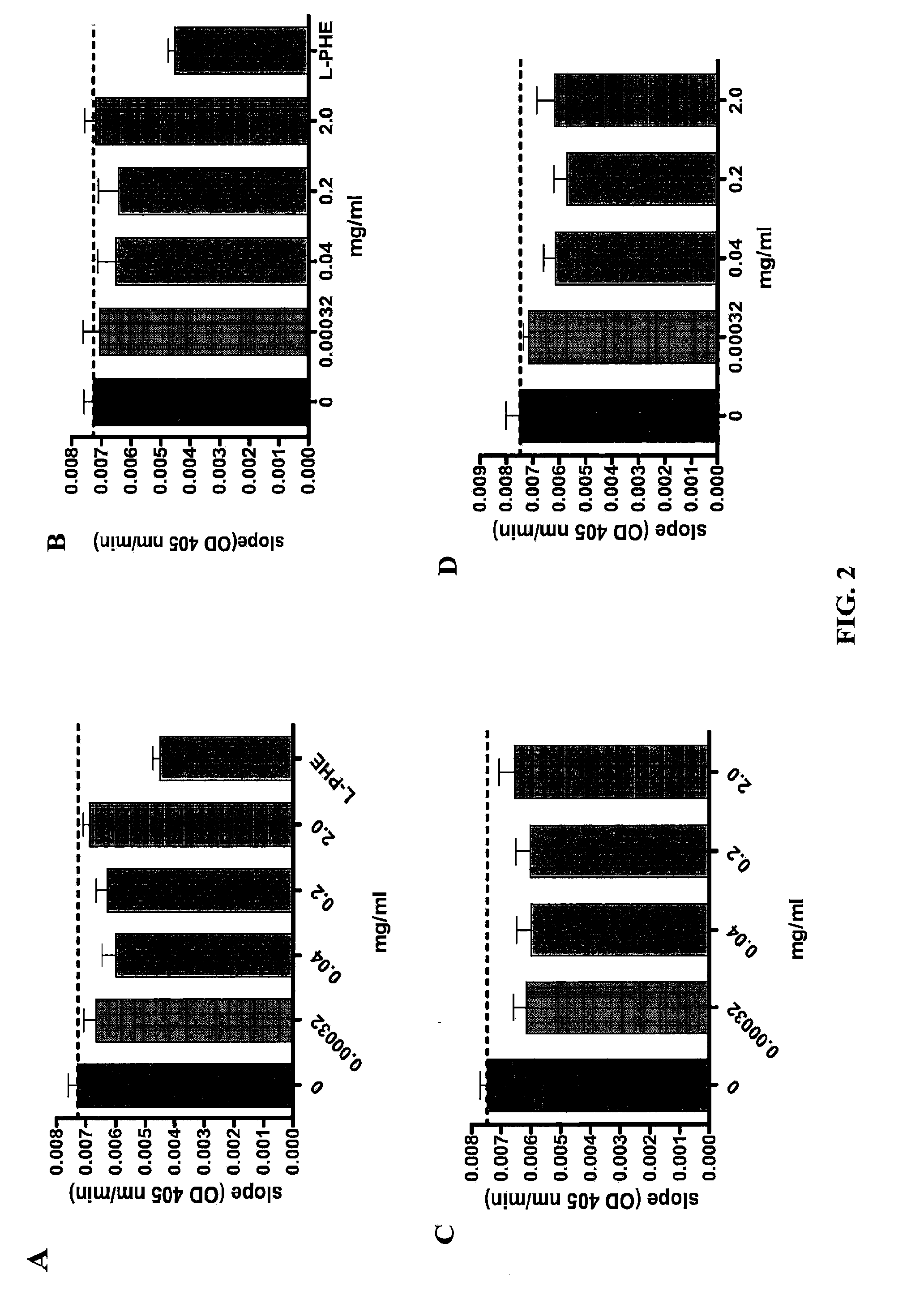Methods of reducing phosphate absorption
a phosphate absorption and absorption technology, applied in the field of reducing phosphate absorption, can solve the problems of increased risk of death, convulsions and cardiac arrest, severe pathophysiology of calcium and phosphate homeostasis, etc., and achieve the effect of attenuating or preventing hyperphosphatemia
- Summary
- Abstract
- Description
- Claims
- Application Information
AI Technical Summary
Benefits of technology
Problems solved by technology
Method used
Image
Examples
example 1
Reducing Serum Phosphate Levels Increased by Vitamin D3
[0049]Materials and Methods
[0050]Animals used for antibody production: Single Comb White Leghorn laying hens were used for antibody production (3 hens per peptide antigen). Each peptide antigen (see Table 1 for sequence and FIG. 1 for sequence and other features) was prepared by conjugating peptide to bovine gamma globulin using standard glutaraldehyde procedure. In some studies, whole enzymes were purchase and used without conjugation. In preparations using whole enzymes (Table 2), vaccine preparations and injection schedules were identical to those described for the conjugated peptides (see below).
TABLE 1The amino acid sequence of peptides used to produce egg antibodies. Amino acid sequences are based on predicted conserved regions of intestinal alkaline phosphatase among animal species. Regions of interest include hydrophilic surface, entrance to the active site, dimmer interface,and metal binding domain.Arbitraryamino acid ...
example 2
Anti-Intestinal Alkaline Phosphatase Antibodies Bind and Inhibit the Activity of Intestinal Alkaline Phosphatase
[0064]Materials and Methods
[0065]Antibodies: The production of anti-intestinal alkaline phosphatase antibodies using various intestinal alkaline phosphatase peptides has been described in Example 1 above.
[0066]Intestinal alkaline phosphatase (IAP) assay: Cell extract from Caco-2 C2BBe1 (# CRL-2102, ATCC, a colorectal adenocarcinoma cell line) were obtained from cultures reaching 100% confluency. Cells were resuspended in assay buffer (19 mM Tris-HCl, 2.68 mM KCl, 137 mM NaCl and 0.1% Triton X-100) and were lyzed by sonication in the presence of 0.5 mg / ml of protease inhibitors (Complete, Roche). Lyophilized and PEG precipitated antibodies (egg yolk) were dissolved in 0.9% saline water. 200 μl of antibodies at 0, 2, 1, 0.2, 0.04, 0.08, 0.0016, and 0.00032 mg / ml were mixed respectively with 50 μl of cell extract, 450 μl of assay buffer containing 0.5 mM MgCl2 at the pH 7.4 o...
example 3
Reducing Serum Phosphate Level in Adenine-Induced Uremic Animals
[0070]The animal model used in this example is the adenine-induced uremic rat model (see e.g., Yokazawa et al., Nephron 1986, 44:230-234; Katsumata et al., Kid Intl 2003, 64:441-450; and Levi R et al., J Am Soc Nephrol 2006, 17:107-112, each of which is herein incorporated by reference in its entirety).
[0071]Rats (e.g., male Sprague Dawley rats approximately 175-250 g, up to 10 rats per group) are fed a control diet or a uremia-inducing adenine diet (e.g., containing 0.75% adenine) for a period of weeks (e.g., 3 to 5 weeks or longer). In one embodiment, the diet can contain phytic phosphate or both inorganic phosphate and phytic phosphate. Rats fed the adenine diet will develop hyperphosphatemia with level of serum phosphate higher than 4.4 mmol / L. These rats will also develop vitamin D3, (1α-hydroxyvitamin D3 and 1α, 25-dihydroxyvitamin D3) deficiency. The daily oral treatment of these rats fed the adenine diet with in...
PUM
| Property | Measurement | Unit |
|---|---|---|
| concentrations | aaaaa | aaaaa |
| concentration | aaaaa | aaaaa |
| concentration | aaaaa | aaaaa |
Abstract
Description
Claims
Application Information
 Login to View More
Login to View More - R&D
- Intellectual Property
- Life Sciences
- Materials
- Tech Scout
- Unparalleled Data Quality
- Higher Quality Content
- 60% Fewer Hallucinations
Browse by: Latest US Patents, China's latest patents, Technical Efficacy Thesaurus, Application Domain, Technology Topic, Popular Technical Reports.
© 2025 PatSnap. All rights reserved.Legal|Privacy policy|Modern Slavery Act Transparency Statement|Sitemap|About US| Contact US: help@patsnap.com



